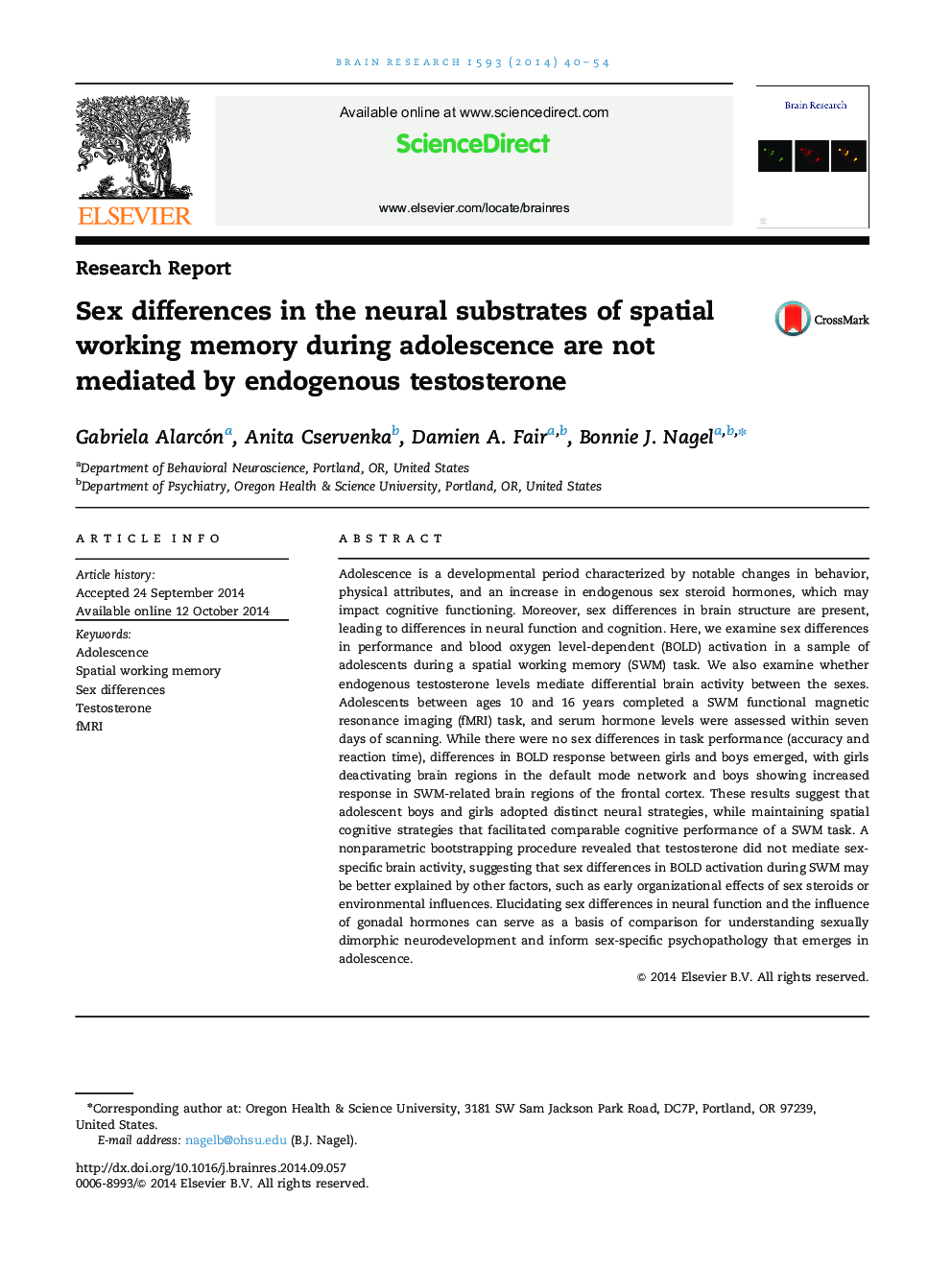| Article ID | Journal | Published Year | Pages | File Type |
|---|---|---|---|---|
| 4323946 | Brain Research | 2014 | 15 Pages |
•Spatial working memory (SWM) BOLD activity differs in adolescent boys and girls.•Boys recruit traditional SWM-related brain regions more robustly than girls.•Girls more effectively disengage default mode-related brain regions than boys.•Testosterone does not mediate sex differences in SWM BOLD response.
Adolescence is a developmental period characterized by notable changes in behavior, physical attributes, and an increase in endogenous sex steroid hormones, which may impact cognitive functioning. Moreover, sex differences in brain structure are present, leading to differences in neural function and cognition. Here, we examine sex differences in performance and blood oxygen level-dependent (BOLD) activation in a sample of adolescents during a spatial working memory (SWM) task. We also examine whether endogenous testosterone levels mediate differential brain activity between the sexes. Adolescents between ages 10 and 16 years completed a SWM functional magnetic resonance imaging (fMRI) task, and serum hormone levels were assessed within seven days of scanning. While there were no sex differences in task performance (accuracy and reaction time), differences in BOLD response between girls and boys emerged, with girls deactivating brain regions in the default mode network and boys showing increased response in SWM-related brain regions of the frontal cortex. These results suggest that adolescent boys and girls adopted distinct neural strategies, while maintaining spatial cognitive strategies that facilitated comparable cognitive performance of a SWM task. A nonparametric bootstrapping procedure revealed that testosterone did not mediate sex-specific brain activity, suggesting that sex differences in BOLD activation during SWM may be better explained by other factors, such as early organizational effects of sex steroids or environmental influences. Elucidating sex differences in neural function and the influence of gonadal hormones can serve as a basis of comparison for understanding sexually dimorphic neurodevelopment and inform sex-specific psychopathology that emerges in adolescence.
